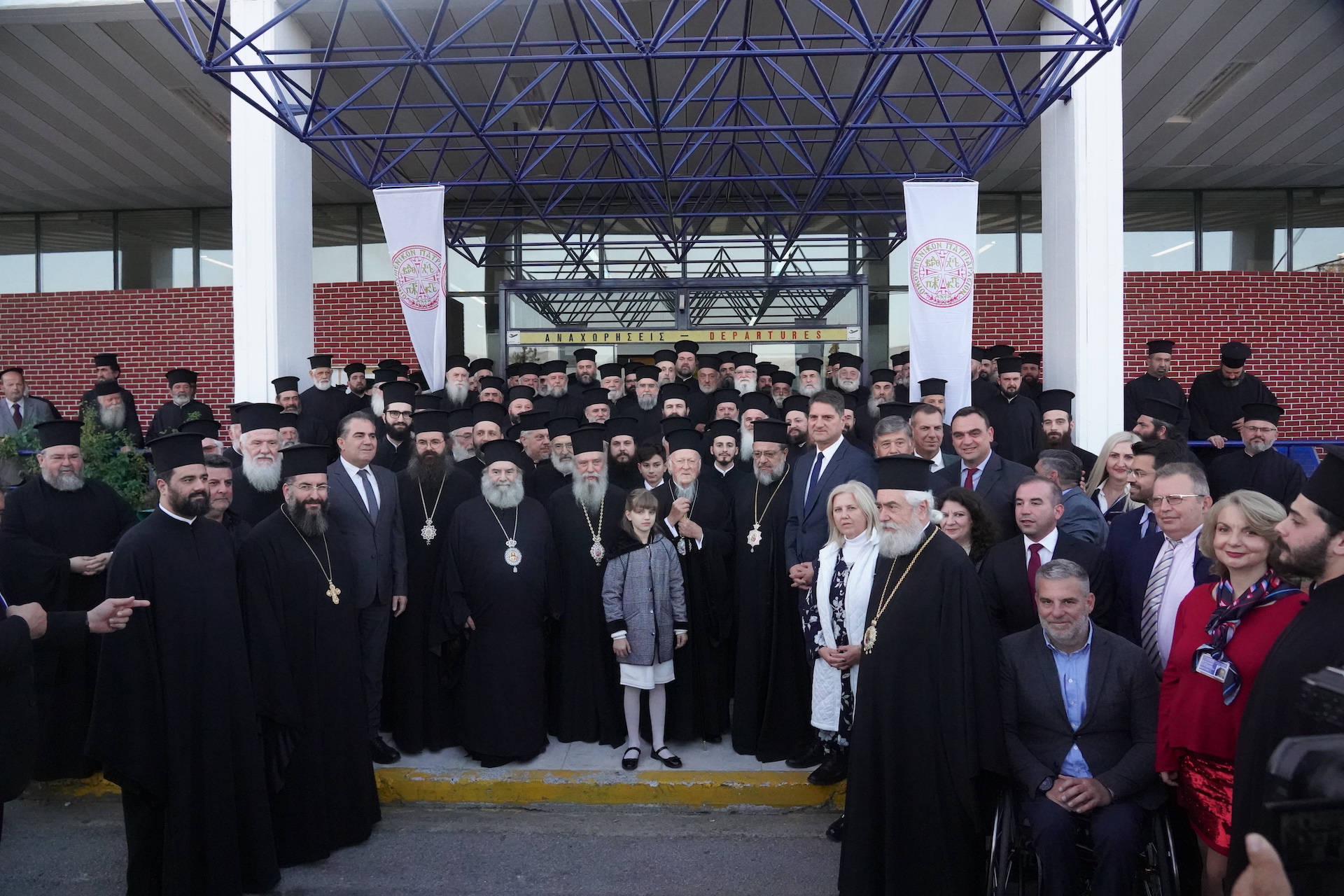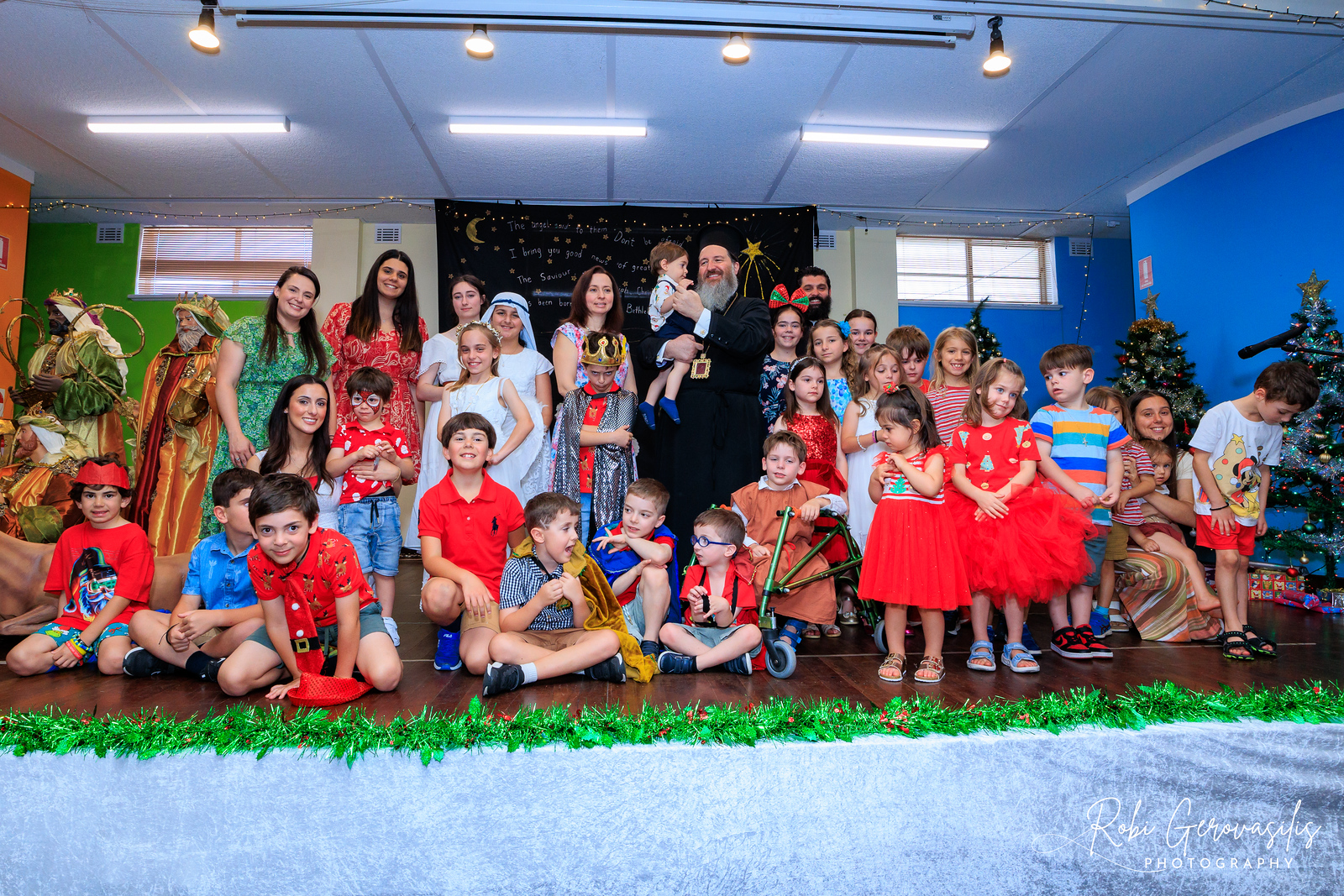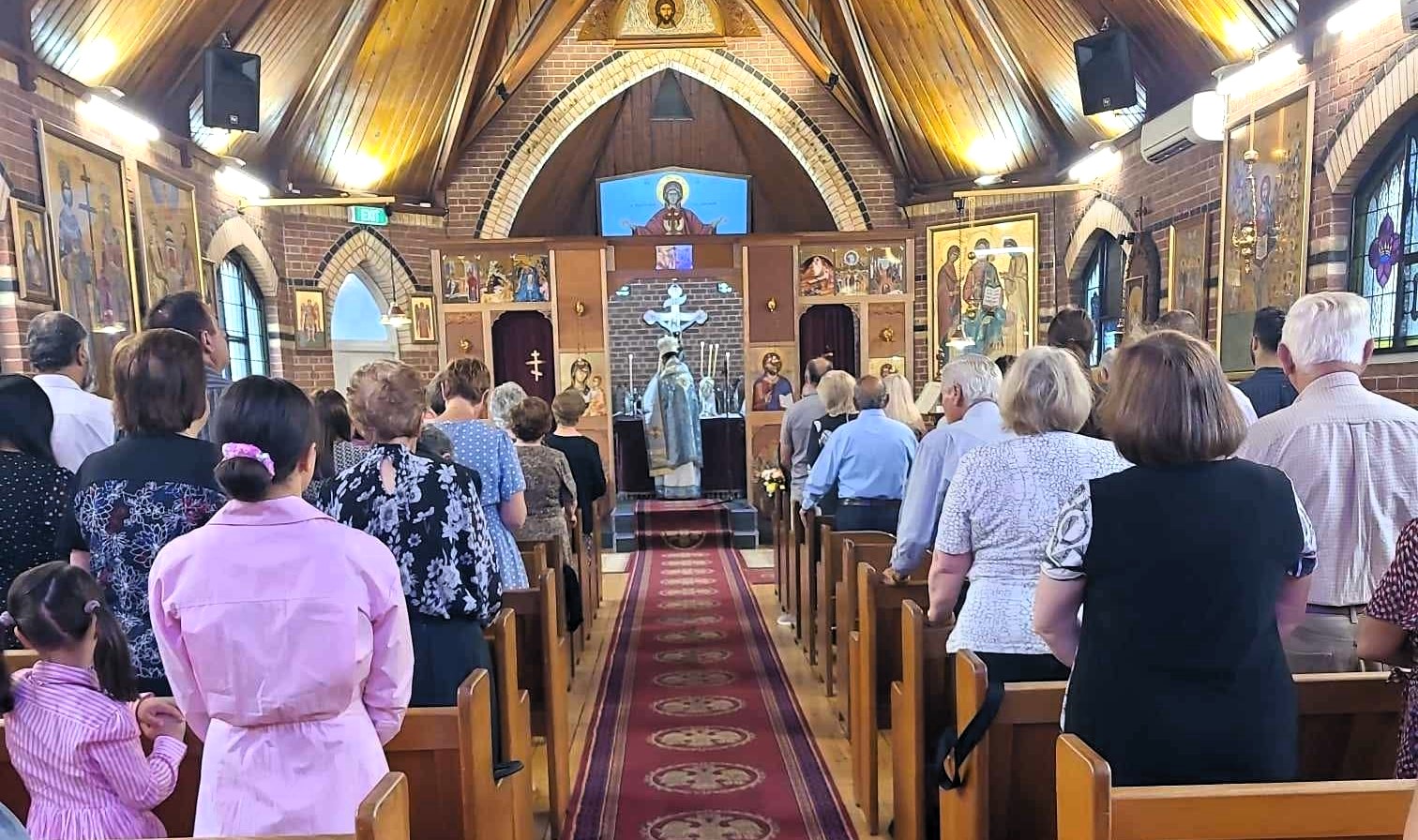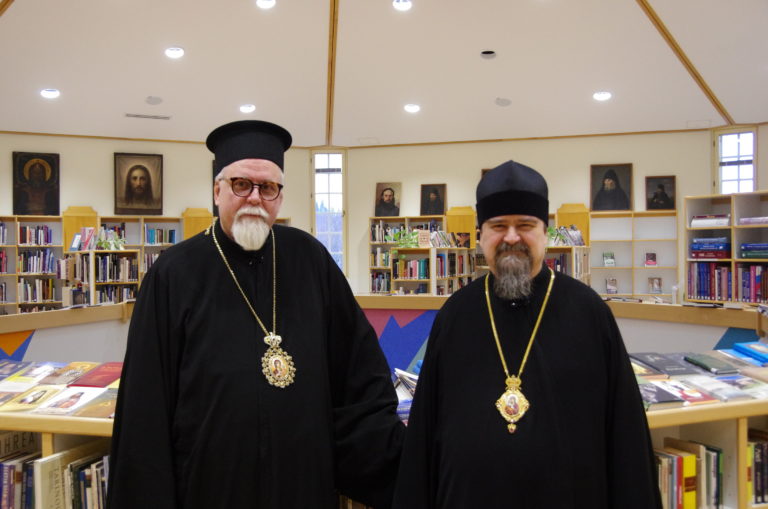Monastic Martyr and Confessor Stephen the New (28 November)
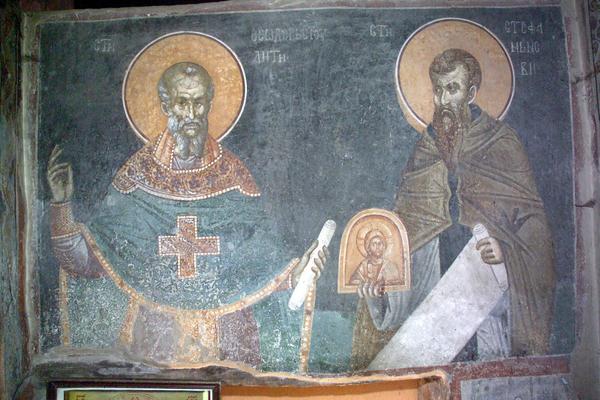

The Monk Martyr and Confessor Stephen the New was born in 715 at Constantinople into a pious Christian family. His parents, having two daughters, prayed the Lord for a son. The mother of the new-born Stephen took him to the Blachernae church of the Most Holy Theotokos and dedicated him to God.
During the reign of the emperor Leo the Isaurian (716-741) there was a persecution against the holy icons and against those venerating them. With the support of the emperor, the adherents of the Iconoclast heresy seized control of the supreme positions of authority in the Empire and in the Church. Persecuted by the powers of this world, Orthodoxy was preserved in monasteries far from the capital, in solitary cells, and in the brave and faithful hearts of its followers.
The Orthodox parents of Saint Stephen, grieved by the prevailing impiety, fled from Constantinople to Bithynia, and they gave over their sixteen-year-old son in obedience to the monk John, who labored in asceticism in a solitary place on the Mount of Saint Auxentius. Saint Stephen dwelt with the venerable monk John for more than fifteen years, devoting himself totally to this spirit-bearing Elder, and learning monastic activity from him. Here Stephen received the news that his father was dead, and his mother and sisters had been tonsured as nuns.
After a certain time his teacher John also died. With deep sorrow Saint Stephen buried his venerable body, and continued with monastic effort in his cave by himself. Soon monks began to come to the ascetic, desiring to learn from him the virtuous and salvific life, and a monastery was established, with Saint Stephen as the igumen. At forty-two years of age Stephen left the monastery he founded, and he went to another mountain, on whose summit he dwelt in deep seclusion in a solitary cell. But here also a community of monks soon gathered, seeking the spiritual guidance of Saint Stephen.
Leo the Isaurian was succeeded by Constantine Copronymos (741-775), a fiercer persecutor of the Orthodox, and an even more zealous iconoclast. The emperor convened an Iconoclast Council, attended by 358 bishops from the Eastern provinces. However, except for Constantine, the Archbishop of Constantinople, illegitimately raised to the patriarchal throne by the power of Copronymos, not one of the other patriarchs participated in the wicked doings of this Council, thus making it less likely to style itself as “ecumenical.” This council of heretics, at the instigation of the emperor and the archbishop, described icons as idols, and pronounced an anathema on all who venerated icons in the Orthodox manner, and it described icon veneration as heresy.
Meanwhile, the monastery of Mount Auxentius and its igumen became known in the capital. They told the emperor about the ascetic life of the monks, about their Orthodox piety, about the igumen Stephen’s gift of wonderworking, and of how Saint Stephen’s fame had spread far beyond the region of the monastery, and that the name of its head was accorded universal respect and love. The saint’s open encouragement of icon veneration and the implied rebuff to the persecutors of Orthodoxy within the monastery of Mount Auxentius especially angered the emperor. Archbishop Constantine realized that in the person of Saint Stephen he had a strong and implacable opponent of his iconoclastic intentions, and he plotted how he might draw him over to his side or else destroy him.
They tried to lure Saint Stephen into the Iconoclast camp, at first with flattery and bribery, then by threats, but in vain. Then they slandered the saint, accusing him of falling into sin with the nun Anna. But his guilt was not proven, since the nun courageously denied any guilt and died under torture and beatings. Finally, the emperor gave orders to lock up the saint in prison, and to destroy his monastery. Iconoclast bishops were sent to Saint Stephen in prison, trying to persuade him of the dogmatic correctness of the Iconoclast position. But the saint easily refuted all the arguments of the heretics and he remained true to Orthodoxy.
Then the emperor ordered that the saint be exiled on one of the islands in the Sea of Marmora. Saint Stephen settled into a cave, and there also his disciples soon gathered. After a certain while the saint left the brethren and took upon himself the exploit of living atop a pillar. News of the stylite Stephen, and the miracles worked by his prayers, spread throughout all the Empire and strengthened the faith and spirit of Orthodoxy in the people.
The emperor gave orders to transfer Saint Stephen to prison on the island of Pharos, and then to bring him to trial. At the trial, the saint refuted the arguments of the heretics sitting in judgment upon him. He explained the dogmatic essence of icon veneration, and he denounced the Iconoclasts because in blaspheming icons, they blasphemed Christ and the Mother of God. As proof, the saint pointed to a golden coin inscribed with the image of the emperor. He asked the judges what would happen to a man who threw the coin to the ground , and then trampled the emperor’s image under his feet. They replied that such a man would certainly be punished for dishonoring the image of the emperor. The saint said that an even greater punishment awaited anyone who would dishonor the image of the King of Heaven and His Saints, and with that he spat on the coin, threw it to the ground, and began to trample it underfoot.
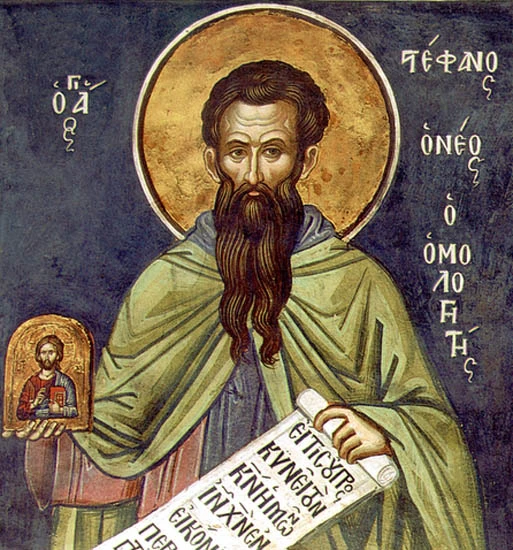

The emperor gave orders to take the saint to prison, where already there were languishing 342 Elders, condemned for the veneration of icons. In this prison Saint Stephen spent eleven months, consoling the imprisoned. The prison became like a monastery, where the usual prayers and hymns were chanted according to the Typikon. The people came to the prison in crowds and asked Saint Stephen to pray for them.
When the emperor learned that the saint had organized a monastery in prison, where they prayed and venerated holy icons, he sent two of his own servants, twin-brothers, to beat the saint to death. When these brothers went to the prison and beheld the face of the monk shining with a divine light, they fell down on their knees before him, asking his forgiveness and prayers, then they told the emperor that his command had been carried out. But the emperor learned the truth and he resorted to yet another lie. Informing his soldiers that the saint was plotting to remove him from the throne, he sent them to the prison. The holy confessor himself came out to the furious soldiers, who seized him and dragged him through the streets of the city. They then threw the lacerated body of the martyr into a pit, where they were wont to bury criminals.
On the following morning a fiery cloud appeared over Mount Auxentius, and then a heavy darkness descended upon the capital, accompanied by hail, which killed many people.
The righteous Stephen was born in Constantinople in 715 to pious parents named John and Anna. His mother had prayed often to the most holy Theotokos in her church at Blachernae to be granted a son, and one day received a revelation from our Lady that she would conceive the son she desired. When Anna had conceived, she asked the newly-elected Patriarch Germanus (see May 12) to bless the babe in her womb. He said, “May God bless him through the prayers of the holy First Martyr Stephen.” At that moment Anna saw a flame of fire issue from the mouth of the holy Patriarch. When the child was born, she named him Stephen, according to the prophecy of Saint Germanus.
Stephen struggled in asceticism from his youth in Bithynia at the Monastery of Saint Auxentius, which was located at a lofty place called Mount Auxentius (see Feb. 14). Because of his extreme labours and great goodness, he was chosen by the hermits of Mount Auxentius to be their leader. The fame of his spiritual struggles reached the ears of all, and the fragrance of his virtue drew many to himself.
During the reign of Constantine V (741-775), Stephen showed his love of Orthodoxy in contending for the Faith. This Constantine was called Copronymus, that is, “namesake of dung,” because while being baptized he had soiled the waters of regeneration, giving a fitting token of what manner of impiety he would later embrace. Besides being a fierce Iconoclast, Constantine raised up a ruthless persecution of monasticism. He held a council in 754 that anathematized the holy icons. Because Saint Stephen rejected this council, the Emperor framed false accusations against him and exiled him. But while in exile Saint Stephen performed healings with holy icons and turned many away from Iconoclasm. When he was brought before the Emperor again, he showed him a coin and asked whose image the coin bore. “Mine,” said the tyrant. “If any man trample upon thine image, is he liable to punishment?” asked the Saint. When they that stood by answered yes, the Saint groaned because of their blindness, and said if they thought dishonouring the image of a corruptible king worthy of punishment, what torment would they receive who trampled upon the image of the Master Christ and of the Mother of God? Then he threw the coin to the ground and trampled on it. He was condemned to eleven months in bonds and imprisonment. Later, he was dragged over the earth and was stoned, like Stephen the First Martyr; wherefore he is called Stephen the New. Finally, he was struck with a wooden club on the temple and his head was shattered, and thus he gave up his spirit in the year 767.
As at one time Hannah, the mother of Samuel, prayed to God to give her a son, so did Anna, the mother of Stephen. Praying thus in the Church of Blachernae before the icon of the Most-holy Theotokos, a light sleep overcame her, and she saw the Most-holy Virgin as radiant as the sun, and heard a voice from the icon: “Woman, depart in peace. In accordance with your prayer, you have a son in your womb.” Anna indeed conceived and gave birth to a son, the holy Stephen. At sixteen, Stephen received the monastic tonsure on Mount Auxentius near Constantinople, from the elder John who also taught him divine wisdom and asceticism. When John entered into rest in the Lord, Stephen remained on the mountain in a life of strict asceticism, taking upon himself labor upon labor. His holiness attracted many disciples to him.
When Emperor Constantine Copronymus was persecuting icons more ferociously than his foul father, Leo the Isaurian, Stephen showed himself a zealous defender of the veneration of holy icons. The demented emperor accepted various obscene slanders against Stephen and personally plotted intrigues to break Stephen and get him out of the way. Stephen was banished to the island of Proconnesus, then taken to Constantinople, chained and cast into prison, where he was met by 342 monks, brought from all over and imprisoned for their veneration of the icons.
There, in prison, they carried out the whole church typicon as in a monastery. Then the wicked emperor condemned Stephen to death. The saint foresaw his death forty days in advance, and asked forgiveness of the brethren. The emperor’s servants dragged him from prison and, beating and pulling him, dragged him through the streets of Constantinople calling upon all those loyal to the emperor to stone this “enemy of the emperor.” One of the heretics struck the saint on the head with a piece of wood, and the saint gave up his soul.
As St. Stephen the Protomartyr suffered at the hands of the Jews, so this Stephen suffered at the hands of the iconoclastic heretics. This glorious soldier of Christ suffered in the year 767 A.D. at the age of fifty-three, and was crowned with unfading glory.
Apolytikion of Stephen the New
Fourth Tone
Trained on the mountain in ascetical labours, with the whole armour of the Cross thou didst vanquish the spiritual arrays of unseen enemies; and when thou hadst stripped thyself with great courage for contest, thou didst slay Copronymus with the sword of the true Faith. For both these things hast thou been crowned by God, O righteous Martyr, blest Stephen of great renown.
Kontakion of Stephen the New
Plagal of the Fourth Tone
With songs and hymns, O ye feast-lovers, let us all extol the godly Stephen, that great lover of the Trinity, for he honoured with his whole heart the comely image of the Master, of His Mother, and of all the Saints. Now with one accord, with longing, and with joy of heart, let us cry to him: Rejoice, O Father most glorious.
Source: oca.org / goarch.org / westserbdio.org

